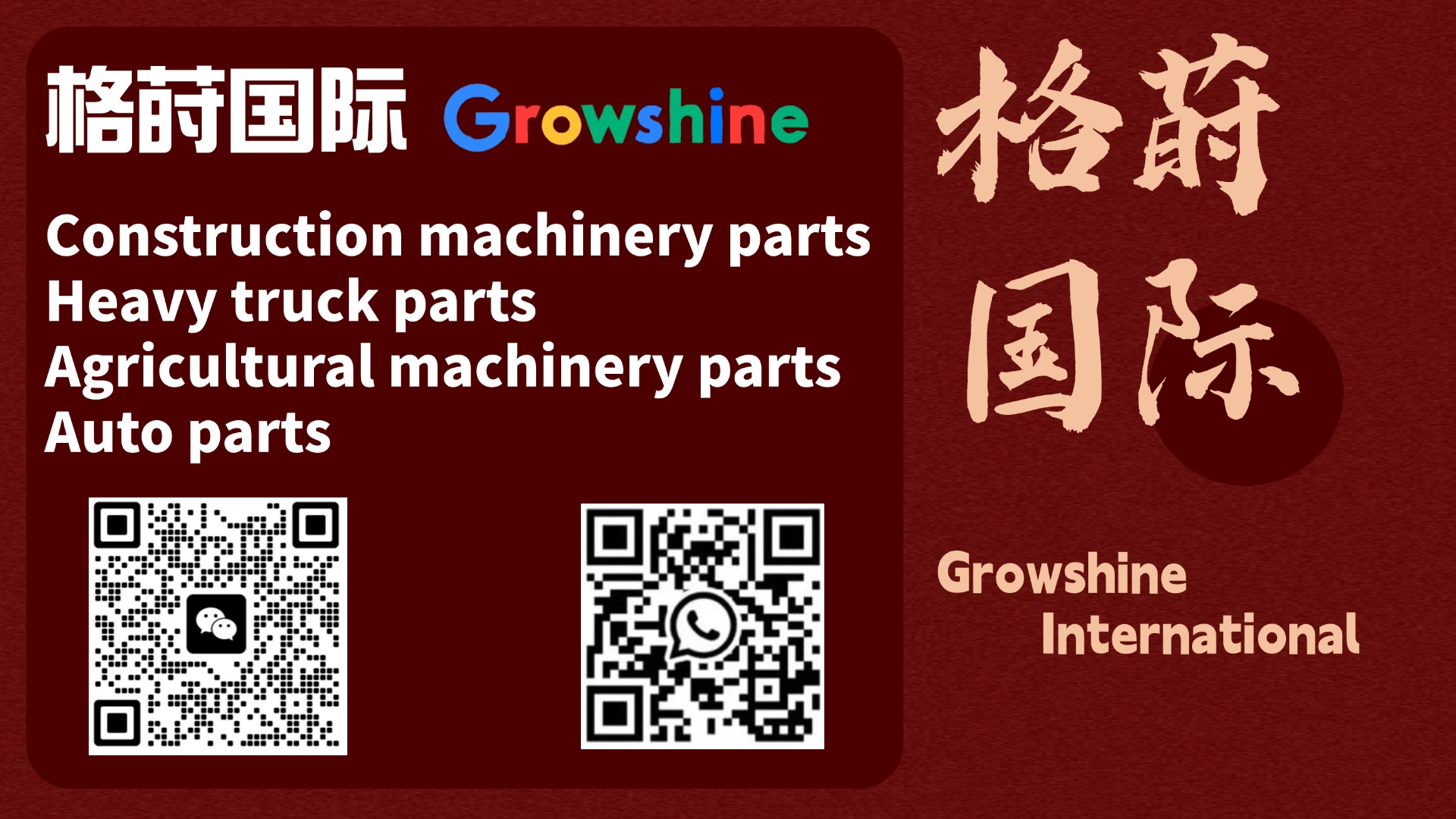
Elevate Your Caterpillar CAT Engine Performance with Premium Aftermarket Parts
For businesses relying on heavy machinery, maintaining peak performance is crucial.
FeaturedCaterpillar CAT Engine Parts
Dipstick 293-4781
Specifically designed for
Aftercooler Core 2W-6593
High-efficiency
Floating Seal 188-2103
Durable
Belt Tensioner 222-2880
Floating Seal 6V-2733 ,7T-0159 ,9W-6651
Versatile
Turbo GTB4088L Turbocharger 397-6195
High-performance
Breather 183-3873
12 Push Rods 264-6156 ,133-6379
Set of
Turbo S200ACG048 Turbocharger 229-2913
Tappet 222-8183 ,279-7859 ,5I-7627 ,324-4060
Multi-compatible
Turbo GTB3782L Turbocharger 424-3431
Front Idler Seal Kit 109-0880
Piston 385-1657
26Pcs Cylinder Head Bolt 263-2915 ,183-5163
Set of
Joystick Controller 297-4587 ,297-4588
12V 40A Alternator 394-3492
Water Tank Radiator 508-6290
Valve Cover 263-7825
Turbo GT25 Turbocharger 479-5799
Swing Gearbox 191-2693
Valve Gasket Seal 268-3490
Overhaul Rebuild Kit for Caterpillar CAT C-9 Engine
Comprehensive
Floating Seal 1P-7249
Overhaul Rebuild Kit for Caterpillar CAT C-9 Scraper
Complete
Overhaul Rebuild Kit for Caterpillar CAT C-9 Dozer
Premium
Glossary ofEngine Parts
Aftercooler Core (后冷器芯): A heat exchanger that cools the compressed air from the turbocharger before it enters the engine. Installed in the intake system. Example:
Caterpillar CAT 3412 Engine uses
Aftercooler Core 2W-6593 . Part Number:
2W-6593 Alternator (交流发电机): A generator that converts mechanical energy to electrical energy, charging the battery and powering electrical systems. Mounted on the engine. Example:
Caterpillar CAT C2.2 Engine uses
12V 40A Alternator 394-3492 . Part Number:
394-3492 Belt Tensioner (皮带张紧器): A device that maintains the correct tension on engine belts, ensuring proper function of driven components. Located on the engine's accessory drive system. Example:
Caterpillar CAT C7 Engine uses
Belt Tensioner 222-2880 . Part Number:
222-2880 Breather (通气阀): A valve that allows gases to escape from the crankcase while preventing contaminants from entering. Located on the valve cover or crankcase. Example:
Caterpillar CAT C18 Engine uses
Breather 183-3873 . Part Number:
183-3873 Dipstick (油尺): A rod used to measure the oil level in the engine's oil pan. Inserted into the dipstick tube on the engine block. Example:
Caterpillar CAT C2.2 Engine uses
Dipstick 293-4781 . Part Number:
293-4781 Floating Seal (浮动油封): A type of mechanical seal used in rotating joints to prevent leakage of fluids. Used in various locations like final drives and transmissions. Example:
Caterpillar CAT C18 Engine uses
Floating Seal 188-2103 . Part Number:
188-2103 Joystick Controller (操纵杆控制器): An input device used to control the movements and functions of heavy machinery. Located in the operator's cabin. Example:
Caterpillar CAT 3126 Engine Excavator uses
Joystick Controller 297-4587 . Part Number:
297-4587 Piston (活塞): A component that reciprocates within the cylinder, converting combustion pressure into mechanical motion. Located inside the engine cylinders. Example:
Caterpillar CAT C9 Engine uses
Piston 385-1657 . Part Number:
385-1657 Push Rod (推杆): A rod that transmits motion from the camshaft to the rocker arms in an overhead valve engine. Located in the valve train system. Example:
Caterpillar CAT C9 Engine uses
Push Rod 264-6156 . Part Number:
264-6156 Tappet (挺杆/气门推杆): A component in the valve train that transmits motion from the camshaft to the pushrods or valves. Located between the camshaft and pushrods or valves. Example:
Caterpillar CAT 3066 Engine uses
Tappet 222-8183 . Part Number:
222-8183 Turbocharger (涡轮增压器): A forced induction device that increases engine power by compressing intake air. Mounted on the exhaust manifold and intake system. Example:
Caterpillar CAT C13 Engine uses
Turbo GTB4088L Turbocharger 397-6195 . Part Number:
397-6195 Valve Cover (气门室盖): A cover that seals the top of the cylinder head, protecting the valve train components. Located on top of the cylinder head. Example:
Caterpillar CAT C9 Engine uses
Valve Cover 263-7825 . Part Number:
263-7825
Common Questions aboutHeavy Equipment Parts
How often should I replace
Caterpillar CAT engine parts ?
Replacement intervals vary depending on the part, engine model, and operating conditions. Refer to yourCaterpillar CAT operation and maintenance manual for specific recommendations. Regular inspection and preventative maintenance are key.
What are the signs of a failing
turbocharger in aCaterpillar CAT engine ?
Signs can include decreased engine power, black or blue exhaust smoke, unusual noises (whining or screeching) from the turbo area, and excessive oil consumption. Prompt diagnosis and replacement are crucial to prevent further engine damage.Where can I find reliable aftermarket
Caterpillar CAT engine parts ?Growshine International is a trusted supplier of high-quality aftermarket
Caterpillar CAT engine parts . We offer a wide range of parts designed to meet OEM standards, ensuring performance and durability. Contact us today to discuss your parts needs.
AboutGrowshine International
Troubleshooting:Excavator Hydraulic System Overheating
Problem: A
Possible Causes and Solutions:
Low Hydraulic Fluid Level: Check the hydraulic fluid reservoir and ensure the fluid is at the correct level. Low fluid can lead to pump cavitation and overheating. Add hydraulic fluid if necessary, using the
Caterpillar CAT recommended type.
Dirty or Clogged Hydraulic Filter: A clogged filter restricts fluid flow, causing pressure buildup and heat generation. Replace the hydraulic filter (
Caterpillar CAT part number may vary, consult manual) with a genuine or high-quality aftermarket filter from
Growshine International .
Faulty Hydraulic Oil Cooler: Inspect the hydraulic oil cooler for damage or blockage. Clean any debris from the cooler fins. If the cooler is damaged, replace it to restore proper cooling capacity.
Internal Leakage: Internal leaks in hydraulic cylinders, pumps, or valves can cause excessive heat. Conduct a hydraulic system pressure test to identify internal leaks. Repair or replace faulty components as needed.
Sticking or Malfunctioning Relief Valve: A relief valve that is stuck or malfunctioning can cause the system pressure to remain too high, leading to overheating. Inspect and test the relief valve. Clean or replace if necessary.
Note: Always consult the




